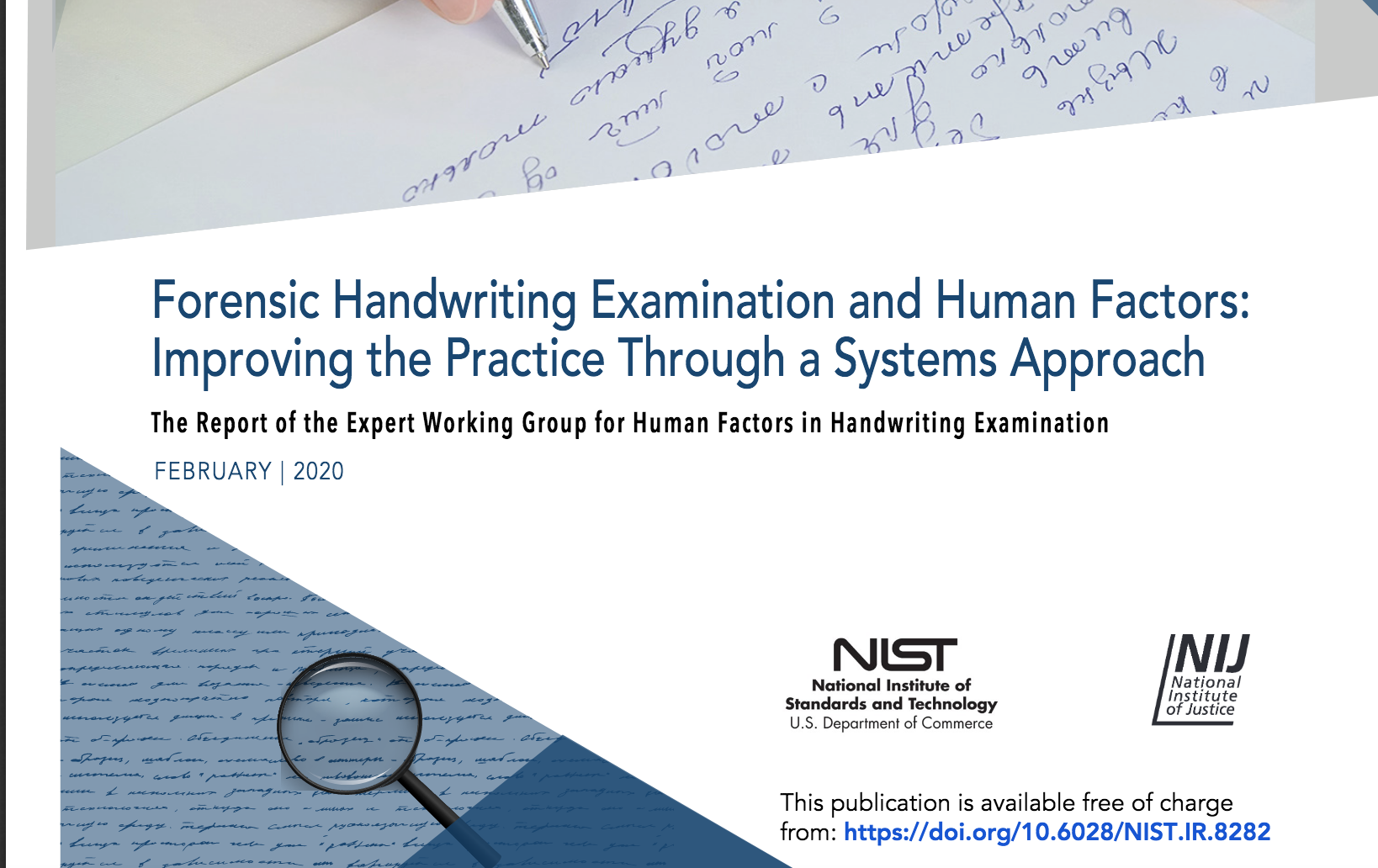
In February 2020, a panel published a scientific assessment of the effects of human factors on forensic handwriting examination, titled Forensic Handwriting Examination and Human Factors: Improving the Practice Through a Systems Approach. It provides a comprehensive discussion of human factors as they relate to all aspects of handwriting examination, from documenting discriminating features to reporting results and testifying in court.
The report also includes recommendations for improving the practice going forward. The authors, the Expert Working Group for Human Factors in Handwriting Examination, are supported by the National Institute of Justice (NIJ) Office of Investigative and Forensic Sciences (OIFS) and the National Institute of Standards and Technology (NIST) Special Programs Office.
More from NIST below:
For some 6,000 years, humans have made an indelible mark on history through the loops, strokes and other characters that constitute the written form of language—handwriting.
Whether it is the movement of a stylus inscribing wet clay or the motion of a pen across paper, handwriting is one of the most familiar forms of expression and one of the most idiosyncratic. The study of handwriting is also an important part of forensic science. By analyzing the characteristics of a handwritten note or signature—not only the slant of the writing and how letters are formed, but more subtle features—a trained forensic document examiner may be able to extract valuable information for determining whether a note or signature is genuine, as well as the likely writer.
The results of a forensic document examination can have far reaching consequences: a person’s life or liberty may hang in the balance. A trained forensic document examiner may be called upon in a court of law to answer—or to supply information that would help a judge or jury answer—questions involving authenticity and writership. However, there is increased recognition and concern, highlighted by several recent studies cited throughout this document, that the nature of evidence and human error can call into question the reliability of many types of forensic examinations, including handwriting.
The study of human factors examines the interactions between humans and other elements of a system: technology, training, decisions, products, procedures, workspaces, and the overall environment encountered at work and in daily living. By analyzing human factors, the nature of human errors in the workplace—how they arise and how they can be prevented or mitigated—can come to light.
The NIJ OIFS and the NIST Special Programs Office sponsored the work of this expert panel to “encourage and enhance efforts to apply human factors principles to forensic science applications, reduce the risk of error and improve the practice of forensic handwriting examination.”
Print this page
